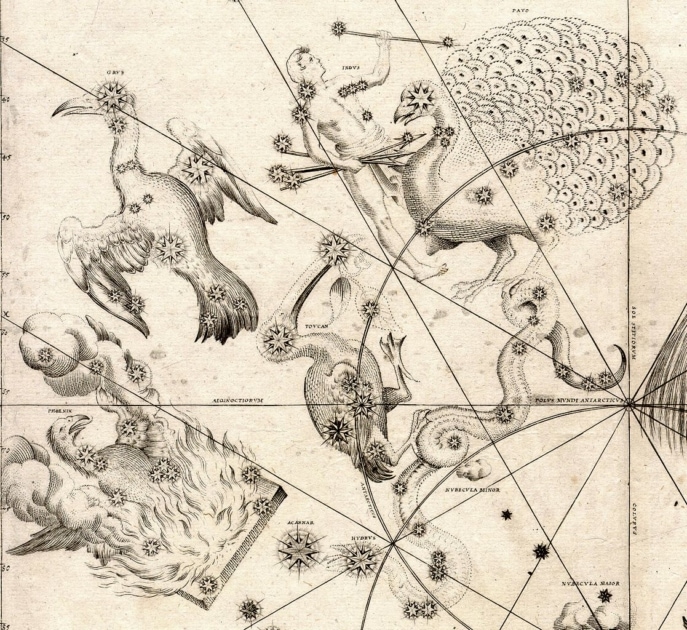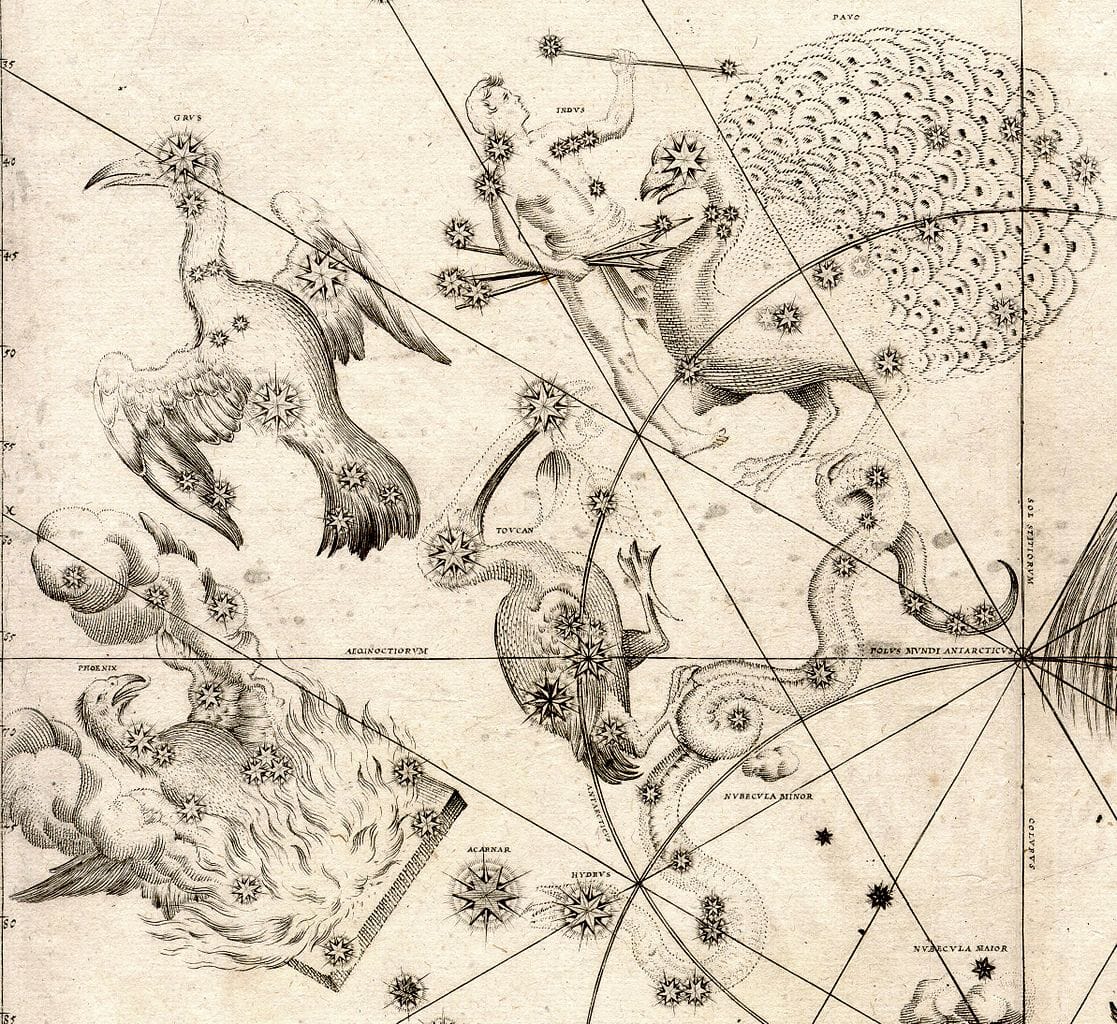The Constellation Phoenix
Visible in the night sky during the fall, Phoenix is one of the famed “Southern Birds." Learn more about this constellation!

Visible in the southern sky primarily in the in the fall, Phoenix is a minor constellation that lies near Fornax and Sculptor to the north, Grus to the west, Tucana and Hydrus to the south, and Eridanus to the east.
Together with Grus, Pavo and Tucana, Phoenix is one of the famed “Southern Birds.”
Phoenix is one of the 88 modern constellations, first added by Flemish astronomer Petrus Plancius during the 16th Century and depicted in star maps by German cartographer Johann Bayer. Named for the the mythic long-lived bird that burns itself up and is reborn from the ashes, Phoenix is the largest of the 12 constellations added by Placinus.
Unlike most other constellations introduced in the modern era, Phoenix did exist during ancient times. Arab cultures described a formation in this area that looked alternately like an ostrich, a griffin, or an eagle.
Phoenix contains 25 stars, about half of which make up its shape—usually depicted as a diamond shape with a long neck and head protruding from one of its angles. The brightest of these, Alpha Phoenicis, is know as Ankaa, an Arabic word meaning “the Phoenix.”
The next brightest is Beta Phoenicis, which is actually a binary system— two stars that appear to be one.
The constellation contains a handful of deep sky objects, including the galaxies NGC 625, NGC 37, NGC 87, NGC 88, NGC 89 and NGC 92. It also contains the aptly named Phoenix cluster, a group of galaxies first discovered in 2010, and El Gordo, two subclusters of galaxies in the process of colliding, first discovered in 2012. The Phienix cluster and El Gordo are two of the largest objects in the visible universe, and are regions of incredible activity. One galaxy within the Phoenix cluster is in the process of creating more than 700 new stars each year.
Two meteor showers, the July and December Phoenicids, originate from the region of the sky where the constellation is located.
Said to consume itself and be reborn every 500 years, the phoenix is a powerful symbol of immortality and resurrection. To the ancient Egyptians, it represented the Sun, one of their gods. In modern times, it has come to be associated with resilience, coming back from a failure or setback and trying again.
Photo: Depiction of The “Southern Birds” Pavo, Phoenix, Grus, and Tucana from Johann Bayer’s Uranometria of 1603, the first celestial atlas to include the southern constellations.

Jaime McLeod
Jaime McLeod is a longtime journalist who has written for a wide variety of newspapers, magazines, and websites, including MTV.com. She enjoys the outdoors, growing and eating organic food, and is interested in all aspects of natural wellness.






